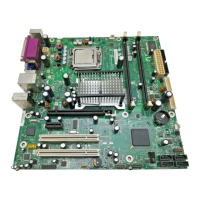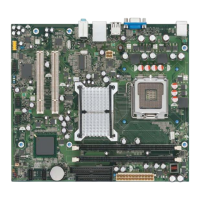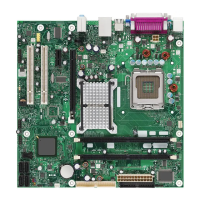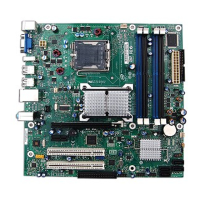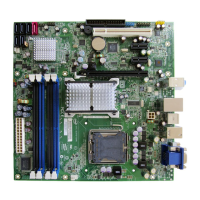Product Description
39
1.12.3 Fan Monitoring
Fan monitoring can be implemented using Intel Desktop Utilities or third-party
software. The level of monitoring and control is dependent on the hardware
monitoring ASIC used with the Desktop Board.
For information about Refer to
The functions of the fan headers Section 1.13.2.2, page 43
1.12.4 Chassis Intrusion and Detection
The board supports a chassis security feature that detects if the chassis cover is
removed. The security feature uses a mechanical switch on the chassis that attaches
to the chassis intrusion header. When the chassis cover is removed, the mechanical
switch is in the closed position.
1.13 Power Management
Power management is implemented at several levels, including:
• Software support through Advanced Configuration and Power Interface (ACPI)
• Hardware support:
⎯ Power connector
⎯ Fan headers
⎯ LAN wake capabilities
⎯ Instantly Available PC technology
⎯ Resume on Ring
⎯ Wake from USB
⎯ Wake from PS/2 devices
⎯ Power Management Event signal (PME#) wake-up support
⎯ PCI Express WAKE# signal support
1.13.1 ACPI
ACPI gives the operating system direct control over the power management and Plug
and Play functions of a computer. The use of ACPI with this board requires an
operating system that provides full ACPI support. ACPI features include:
• Plug and Play (including bus and device enumeration)
• Power management control of individual devices, add-in boards (some add-in
boards may require an ACPI-aware driver), video displays, and hard disk drives
• Methods for achieving less than 15-watt system operation in the power-on/standby
sleeping state
• A Soft-off feature that enables the operating system to power-off the computer
• Support for multiple wake-up events (see
Table 9 on page 42)
• Support for a front panel power and sleep mode switch

